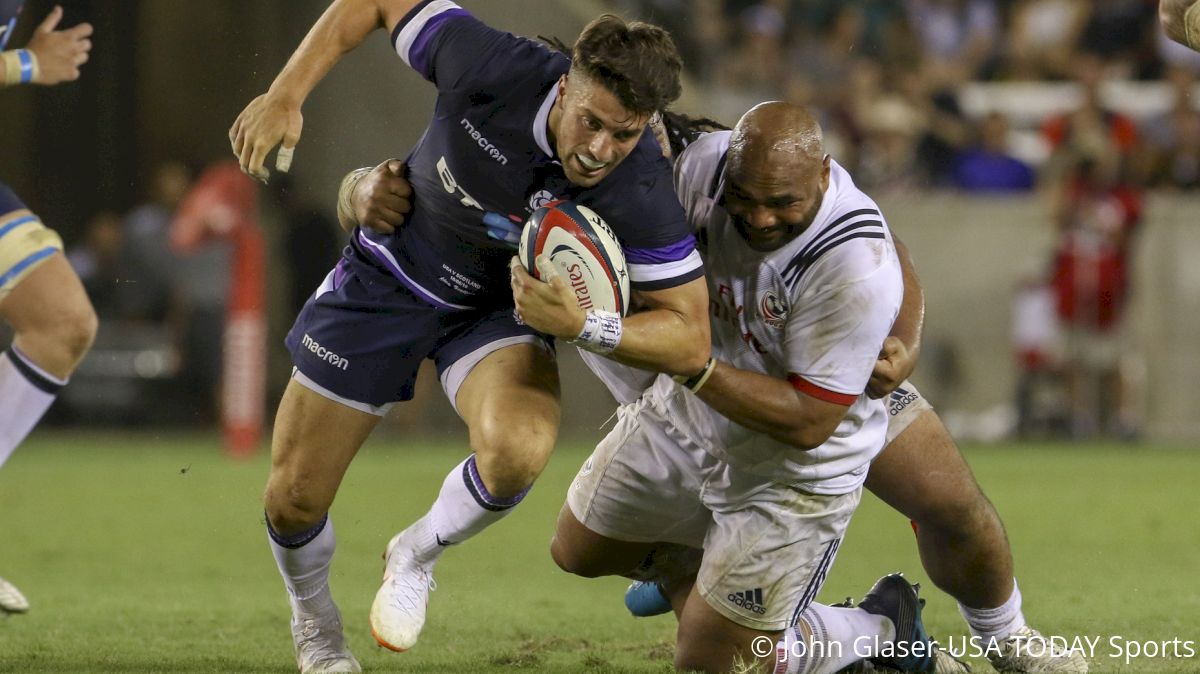Rugby vs Football: Which Is More Dangerous?
Rugby vs Football: Which Is More Dangerous?
Both rugby and football are high-impact sports, but which one is more dangerous?

As far as team sports go, rugby and football are probably the two most physical when it comes to collisions and impact on the body. While both games have implemented rules over the years to make play safer, there is still an inherit risk we take every time we step onto the field to play either rugby or football.
But, often the debate comes up about which sport is safer out of the two, and which sport parents should allow their kids to play. Many people think rugby is more dangerous because of its lack of pads, while others think the pads that football players wear give them a false confidence to be reckless with their bodies.
There are arguments to both sides, and statistics will reveal different data to support different points of view. So lets look into both sports and the risks associated with each before jumping to a conclusion about which one is more dangerous:
Rugby
Obviously, the fact that the game of rugby involves no pads or required head gear lends itself to a lot of scrutiny around safety. Naturally, having no protection besides a mouthpiece means players are going to be more prone to cuts, abrasions, lacerations, and bleeding.
It's certainly not uncommon for players to draw blood during a game, but in the instance where that happens, the player must be subbed out until the bleeding is stopped. While all of the aforementioned injuries are undesirable, they are certainly not severe in the long run of things.
What could be severe, though, is the potential for head and neck injuries given that rugby players do not wear helmets. Should two players collide head to head in a game, the consequences can be dire. Fortunately, there are rules surround the contact area that limit the dangers of head to head contact.
Firstly is the fact that players must wrap up when attempting to tackle. This prevents players from launching into the contact shoulder or head first. Second is the laws around tackle height. Because you are not allowed to tackle someone above the shoulders, contact with the head and neck is mitigated significantly.
Football
In football, the protective gear prevents a number of injuries, particularly to the shoulders and upper body. Having pads on certainly reduces the risk of cuts and abrasions, but on the flip side it can lead players to think they are invincible, particularly with the use of their heads.
Having a helmet on allows players to use their head as a weapon, with blocking, tackling, and running the ball. While it is definitely effective to use your head to tackle, it's really dangerous in the long run when it comes to repeated head injuries and micro-concussions. Over time, players can sustain injuries to the brain through consistent trauma to the head both in practice and in games.
Furthermore, football does not require players to wrap up on tackles so guys can leave their feet going into a collision and use their shoulders or head on hits.
What does the data say?
When it comes to concussions, research conducted by Complete Concussion Management in 2018 revealed that of all sports, men's rugby had the highest rate of concussion for people over the age of 18, with a rate of 3.0 concussions per every 1,000 players per game. Football comes in second with 2.5 concussions per every 1,000 players per game.
For players under the age of 18, rugby was also number one, at 4.18, while football was third at 0.53. As far as injuries in general, a study performed by doctors Nienke W. Willegenburg, James R. Borcher, and Richard Quincy of Ohio State University in 2016 showed that collegiate rugby players suffered injuries at a rate of 15.2 per every 1,000 players per game, while collegiate football players got injured at a rate of 4.9 per every 1,000 players per game.
Conclusion
The data would suggest that rugby is indeed a more dangerous sport in the sense that a player is more likely to get hurt while playing. However, the severity of injury is likely higher in football, considering the nature of the collisions to be at a greater speed and with less control. Both sports lend players to a greater risk of long-term health issues than other sports, but are also continually making improvements year in and year out to make their respective games safer.